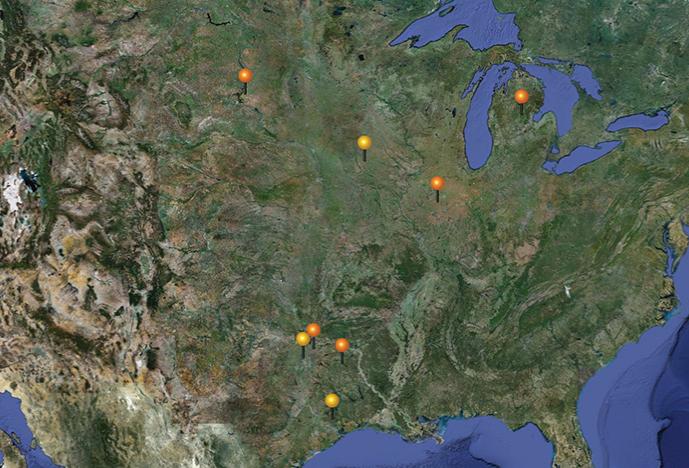
This satellite image shows the reported incidence of West Nile virus on June 21, 2013, as compiled by HealthMap scientists.
Maps have evolved considerably since the first cartographers painted sketches on cave walls thousands of years ago. Modern maps depict distances between locations and, when accessed electronically, can even display local restaurants and traffic conditions. Now there’s a map that pinpoints where local and global infectious disease outbreaks are located, in real time.
In 2006, John Brownstein, then a junior faculty member at Boston Children’s Hospital, was spending a lot of time analyzing data for disease trends, such as incidence of the flu. He noticed that the data, while very rich, were not accessible to the general public or to researchers. To overcome this obstacle, Brownstein considered ways he could create a resource and use the Internet to deliver it. The idea for HealthMap was born.
HealthMap is an online aggregator that displays more than 100 disease outbreaks and public health threats around the world, such as flu, whooping cough, cholera, coronavirus, and dengue fever. The online tool was developed by Brownstein, now an HMS associate professor of pediatrics at Boston Children’s and a researcher at the HMS Center for Biomedical Informatics, and Clark Freifeld, a research software developer at Boston Children’s.
“With the advent of smartphones and apps, we’ve built an app called Outbreaks Near Me where people can report into the system directly, so we do a lot in the realm of crowdsourcing,” says Brownstein.
More than one million people use the interactive system annually, including clinicians who want to provide context and background information about diseases to their patients. In addition to general disease monitoring, HealthMap’s data streams also provide surveillance of mass gatherings, such as the World Cup, and of major disease outbreaks, such as H1N1 and the cholera epidemic in Haiti.
Brownstein’s team is made up of more than 40 clinicians, computer scientists, software developers, and engineers who conduct round-the-clock searches for specific keywords online, including in news sources and blogs, in the hope of uncovering reports of disease outbreaks. Using algorithms and machine-based learning tools, the team adds those keywords into the database, searches for duplicate records, and converts the text into a categorization system based on disease and location, which is then translated into 15 languages.
Social media monitoring is a growing area of interest for the team. Recently, the researchers analyzed tweets posted immediately after the Boston Marathon bombings in April. They noted that these sorts of public tweets could be particularly useful to first responders if linked to monitored alert systems because social media platforms can track a user’s location.
So what’s next for HealthMap? Flu Near You is a reporting tool that allows consumers to participate in data generation by completing weekly surveys on flu symptoms. The tool has turned into a robust national crowdsourcing effort and a surveillance system that the team hopes to expand to an international scope.